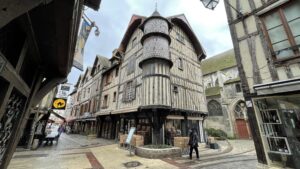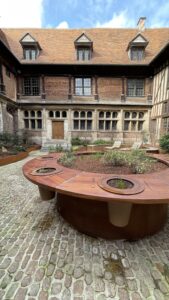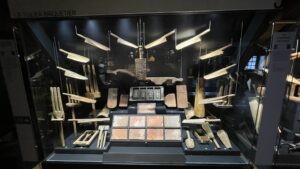 In a previous post, I discussed one of the best ways to stretch your travel dollars in Europe: visiting “second” cities, the somewhat less-traveled metropolises that allow you to experience a country’s culture and sights without the huge crowds and high prices of its capital cities.
In a previous post, I discussed one of the best ways to stretch your travel dollars in Europe: visiting “second” cities, the somewhat less-traveled metropolises that allow you to experience a country’s culture and sights without the huge crowds and high prices of its capital cities.
Here’s one to consider adding to your list: Troyes (pronounced “twah,” like the French number three) in the Champagne region of France.
If you’ve never heard of Troyes, don’t feel bad: neither had I until a recent road trip out of Paris. Even our Parisian friends looked puzzled when I mentioned Troyes, perhaps because this small city is best known today for its outlet stores.
But Troyes is well worth a visit, particularly if you like medieval old towns with narrow cobblestone streets and half-timbered buildings, or fascinating one-of-a-kind museums, plus a rather excessive number of Gothic churches. (One source says there are 11, another six, but I only visited three before I’d had my fill of stained glass, sad-eyed statuary and worn-away ledgerstones, those tomb coverings set in the floors of old churches.)
Troyes used to be an important trade center in the Middle Ages and standardized the unit of measure known as the troy ounce. It was also a big-enough deal in the art world that there is a “School of Troyes” style of painting and sculpture (featured in one of those museums I just mentioned).
But unlike other French cities, which grew and eventually knocked down most of their half-timbered construction, Troyes entered a long economic slump. As a result, its old town still has hundreds of these old buildings to see and explore.
 One of the prettiest – with a huge inner courtyard and a turret – is the Hôtel de Mauroy, which houses one of the coolest museums I’ve ever seen: Maison de l’Outil et de la Pensée Ouvrière. Translated, that’s the “house of tools and workers’ thought.”
One of the prettiest – with a huge inner courtyard and a turret – is the Hôtel de Mauroy, which houses one of the coolest museums I’ve ever seen: Maison de l’Outil et de la Pensée Ouvrière. Translated, that’s the “house of tools and workers’ thought.”
 Who cares about tools? I don’t, much, but I spent a couple of fascinating hours looking at thousands of hand-made tools from the 17th and 18th centuries collected by a 20th Century Jesuit priest. The museum offers a handy printed guide as well as an audio guide which I’m sure are chock-full of great info about the workers and trades who used these tools. I was content just to look at the beautifully lit, artistically arranged display cases – including one with dozens of hand trowels arranged like schools of fish.
Who cares about tools? I don’t, much, but I spent a couple of fascinating hours looking at thousands of hand-made tools from the 17th and 18th centuries collected by a 20th Century Jesuit priest. The museum offers a handy printed guide as well as an audio guide which I’m sure are chock-full of great info about the workers and trades who used these tools. I was content just to look at the beautifully lit, artistically arranged display cases – including one with dozens of hand trowels arranged like schools of fish.
Other must-sees include a stained glass museum and a small-but-mighty apothecary museum. Turns out the pharmacists of old relied on stuff like ground-up mummies and the skulls of men who died violently to cure the ailments of the living. Also, check out Ruelle des Chats or “cat alley,” a lane where the half-timbered buildings nearly touch, making it easy for cats to hop from one rooftop to the next.
Troyes is about two hours south of Paris by car or train. I stayed in the central, historic Best Western Premier Hotel de la Poste and Spa, which I highly recommend.
Do you have another “second city” to recommend? Please do so in the comments below. Thanks!